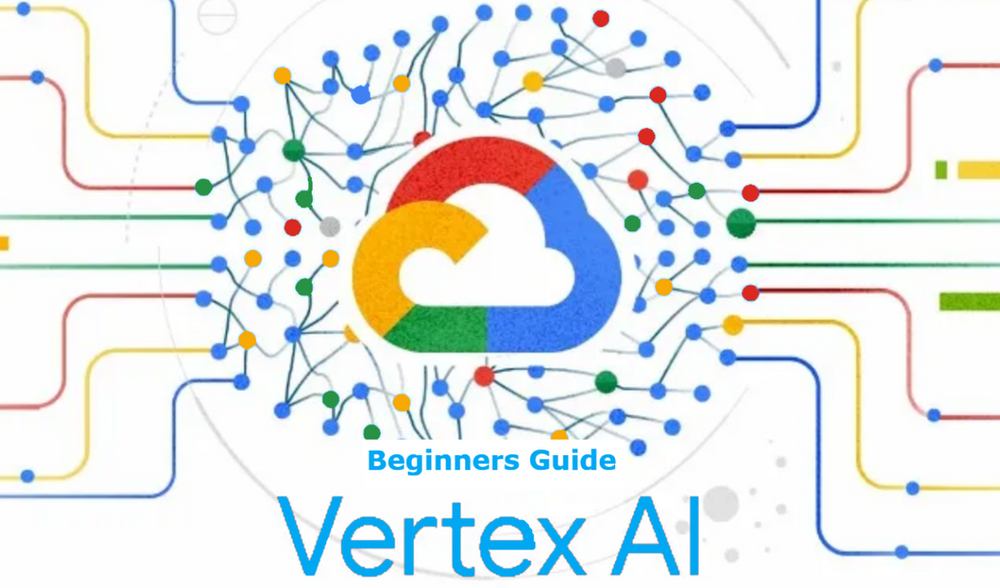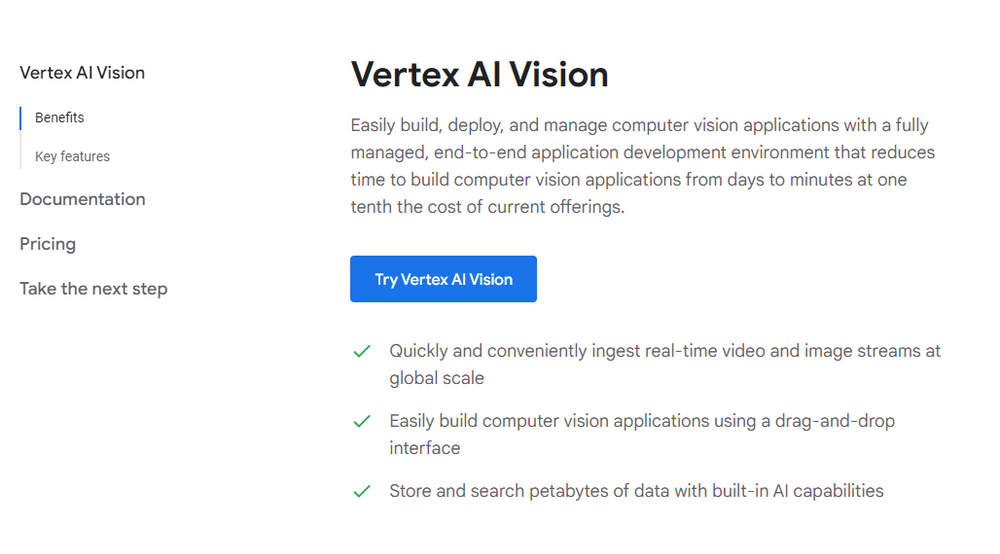In Brief: A beginner-friendly introduction to Vertex AI, a powerful machine learning (ML) platform by ,Google Cloud. The article will discuss the platform’s key features, such as AutoML, custom training, MLOps tools, and seamless integration with Google Cloud services. It will also outline the pros and cons of using Vertex AI, helping beginners decide if this platform is the right choice for their ML projects.

As the world of artificial intelligence and machine learning continues to advance, the need for powerful and easy-to-use platforms to support these endeavors becomes crucial. Google Cloud’s Vertex AI is an excellent example of such a platform, providing a comprehensive suite of tools that simplifies and accelerates the development, deployment, and management of machine learning models and applications. This beginner’s guide to Vertex AI will introduce the platform, explore its capabilities, and show how it can benefit your machine learning projects.
Overview of Vertex AI
Vertex AI is a machine learning platform that brings together data engineering, data science, and machine learning engineering workflows, enabling teams to collaborate using a common set of tools. The platform offers several options for model training, including AutoML for training models without writing code or preparing data splits and custom training for users who require more control over the training process.
Vertex AI also provides end-to-end MLOps (Machine Learning Operations) tools, which help automate and scale projects throughout the machine learning lifecycle. These tools run on fully managed infrastructure, offering customization options based on performance and budget needs.
The platform can be accessed using a variety of interfaces, such as the Vertex AI SDK for Python, Google Cloud Console, the Google Cloud command line tool, client libraries, and Terraform (with limited support).
Step-by-Step Vertex AI, Understanding ML Workflow
Before we take a deeper look to this, let’s understand the machine learning workflow.

After defining the prediction task, the first thing you do is ingest the data, analyze it, and then transform it; then, you create and train the model. Evaluate the model for efficiency and optimization and deploy it to make predictions. For example:
Ingestion, analysis, and transforming are all about data preparation, and you do that through managed data sets within Vertex AI. You have tools to create the data set by importing the data using the console or the API. Whereas, for model training, you have two options: Auto ML or custom; with varying machine learning expertise, for some use cases, Auto ML works wonderfully, such as images or videos and text files. But, if you want more control on your model’s architecture, you must use custom models, as they are great for TensorFlow or Pytorch code. Once the model is trained, you have the ability to assess that model and optimize it, and understand the signals behind your models’ predictions with explainable AI.
Explainable AI allows you to dive deeper into the model and understand which factors are playing a role in defining what the model is predicting. If you’re happy with the model, you can deploy it to an endpoint to serve it for online predictions using the API or the console.
The deployment includes all the physical resources and the scalable hardware that’s needed to scale the model for lower latency and online predictions. When the model is deployed, you can get the projections using the command line interface, the console UI, or the SDK and the APIs.
The Machine Learning Workflow with Vertex AI:
- Data Preparation: The first step in any machine learning project is data preparation, which involves extracting, cleaning, and analyzing the dataset. With Vertex AI, you can explore and visualize data using Vertex AI Workbench notebooks, which integrate with Cloud Storage and BigQuery for faster data processing. For handling large datasets, you can utilize Dataproc Serverless Spark from its Workbench notebook.
- Model Training: After preparing the data, you need to train a model using a suitable training method. Vertex AI offers AutoML for training models with tabular, image, text, and video data without coding. For more control over the training process, you can use custom training with your preferred ML framework and hyperparameter tuning options. Vertex AI Vizier can also help optimize hyperparameters for custom-trained models.
- Model Evaluation and Iteration: Once the model is trained, it is essential to evaluate its performance using metrics like precision and recall. You can create evaluations through the Vertex AI Model Registry or include them in your Vertex AI Pipelines workflow. Based on the evaluation results, you can make adjustments to the data and iterate on the model.
- Model Serving: With Vertex AI, you can easily deploy your models into production for real-time online predictions or asynchronous batch predictions. The platform also supports an optimized TensorFlow runtime for serving TensorFlow models at a lower cost and lower latency. In addition, the Vertex AI Feature Store is available for serving features from a central repository for online serving cases with tabular models.
- Model Monitoring: Monitoring the performance of your deployed models is crucial for ensuring their effectiveness. Vertex AI Model Monitoring can help you keep track of training-serving skew and prediction drift, alerting you when the prediction data deviates significantly from the training baseline.
Key Features of Vertex AI
It offers a range of features and tools to support various aspects of the machine learning workflow. Some notable features include:
- AutoML: Develop high-quality custom machine learning models without writing training routines.
- Workbench: A Jupyter-based environment for data scientists to carry out their ML work, from experimentation to deployment and model management.
- Data Labeling: Obtain accurate labels from human labelers for improved machine-learning models.
- Explainable AI: Understanding and building trust in your model predictions with robust explanations.
- Feature Store: A central repository for serving, sharing, and reusing ML features.
- ML Metadata: Track artifacts, lineage, and execution for ML workflows with an easy-to-use Python SDK.
- Model Monitoring: Automated alerts for data drift, concept drift, or other model performance incidents requiring supervision.
- Pipelines: Streamline your MLOps by building pipelines using TensorFlow Extended and Kubeflow Pipelines, with detailed metadata tracking, continuous modeling, and triggered model retraining.
Advantages and Disadvantages
Pricing
Vertex AI offers flexible pricing based on model training, predictions, and Google Cloud product resource usage. You can find full pricing rates on the platform’s website or estimate your costs using their pricing calculator.

Conclusion
As a beginner, diving into the world of machine learning and artificial intelligence can be daunting. However, Google Cloud’s Vertex AI offers a comprehensive and user-friendly platform that can support you throughout the entire machine learning workflow. From data preparation to model deployment and monitoring, it provides the tools and features needed to accelerate your projects and help you achieve success in your machine-learning endeavors.
By leveraging Vertex AI, you can access state-of-the-art technology, simplify your machine learning processes, and collaborate more effectively with your team. So, if you’re new to machine learning or looking to streamline your existing projects, consider giving it a try and harness the power of Google Cloud’s machine learning platform.

